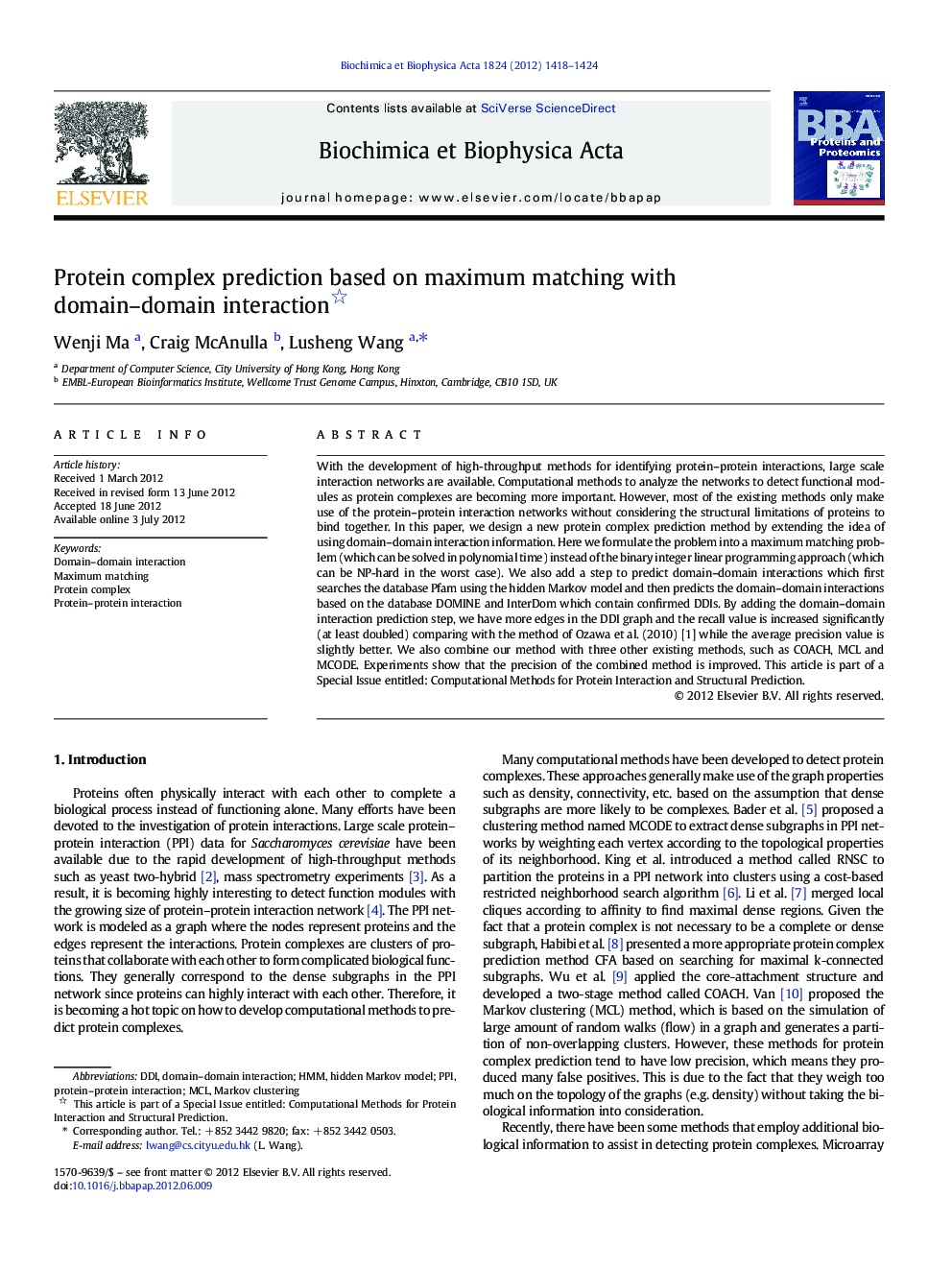| Article ID | Journal | Published Year | Pages | File Type |
|---|---|---|---|---|
| 1178404 | Biochimica et Biophysica Acta (BBA) - Proteins and Proteomics | 2012 | 7 Pages |
With the development of high-throughput methods for identifying protein–protein interactions, large scale interaction networks are available. Computational methods to analyze the networks to detect functional modules as protein complexes are becoming more important. However, most of the existing methods only make use of the protein–protein interaction networks without considering the structural limitations of proteins to bind together. In this paper, we design a new protein complex prediction method by extending the idea of using domain–domain interaction information. Here we formulate the problem into a maximum matching problem (which can be solved in polynomial time) instead of the binary integer linear programming approach (which can be NP-hard in the worst case). We also add a step to predict domain–domain interactions which first searches the database Pfam using the hidden Markov model and then predicts the domain–domain interactions based on the database DOMINE and InterDom which contain confirmed DDIs. By adding the domain–domain interaction prediction step, we have more edges in the DDI graph and the recall value is increased significantly (at least doubled) comparing with the method of Ozawa et al. (2010) [1] while the average precision value is slightly better. We also combine our method with three other existing methods, such as COACH, MCL and MCODE. Experiments show that the precision of the combined method is improved. This article is part of a Special Issue entitled: Computational Methods for Protein Interaction and Structural Prediction.
► Domain–domain interaction data are used to predict protein complexes. ► A polynomial time algorithm for maximum matching is used. ► We have an additional domain–domain interaction prediction step. ► Combined with the current methods, the precision is significantly improved.
